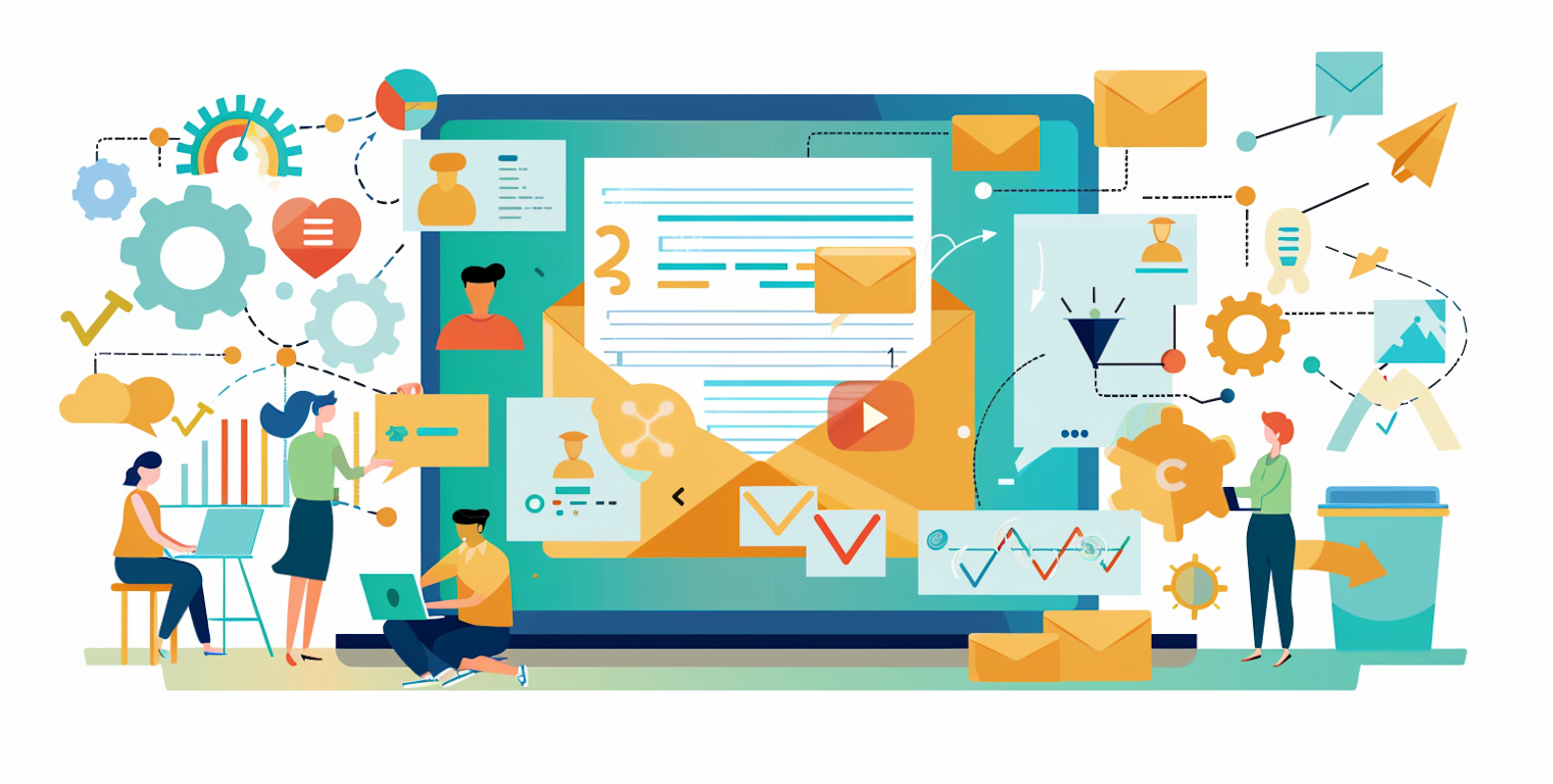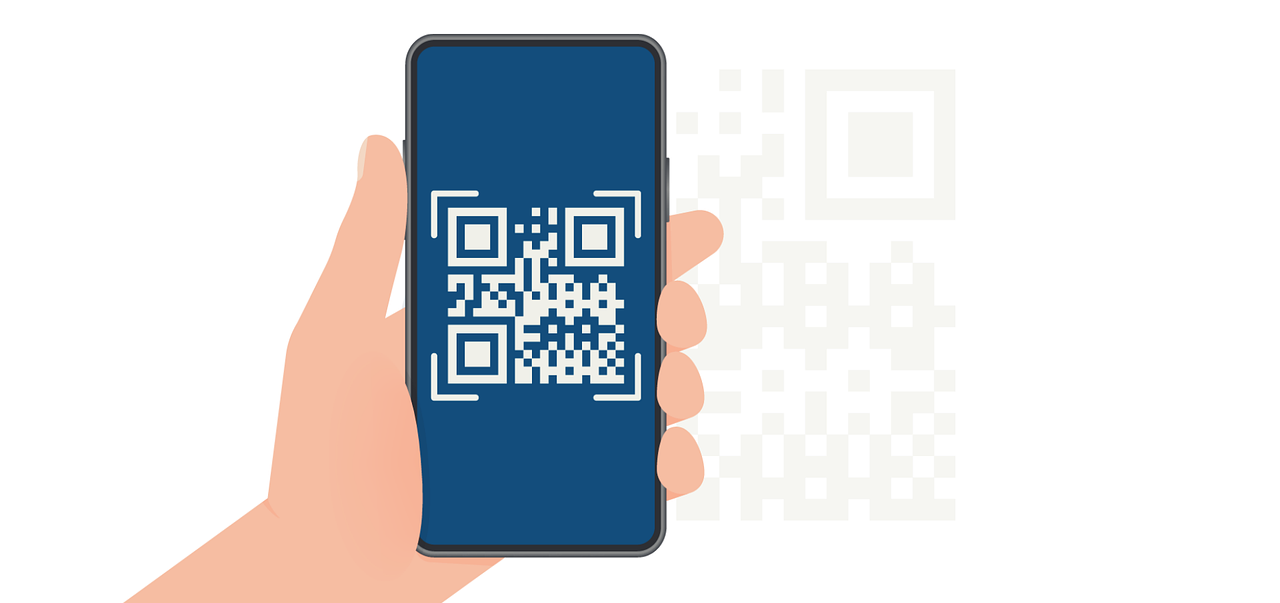How to create an email newsletter: 2025 guide
Master the art of email newsletters with our 2025 guide. Discover step-by-step strategies for design, content, and effective sending. Engage your audience today

Creating an email newsletter might seem like a big undertaking, but it's actually one of the smartest moves you can make for your business communication strategy. Whether you're running a startup, managing a team, or building your personal brand, newsletters offer something social media can't match, direct access to your audience's inbox.
The real value of email newsletters in business communication
Think about your own inbox for a moment. The newsletters you actually open and read probably share something in common, they deliver genuine value. That's exactly what makes email newsletters such a powerful tool for businesses and teams.
Unlike social media posts that disappear into the algorithmic void, newsletters land directly where your audience checks multiple times a day. You control the message, the timing, and most importantly, you own the relationship. No platform changes or algorithm updates can take away your subscriber list.
What makes email newsletters work
The beauty of newsletters lies in their simplicity and effectiveness. When done right, they help you:
- Build genuine relationships with customers and prospects
- Share updates and insights on your own terms
- Drive meaningful traffic to your website or offerings
- Create a predictable communication rhythm your audience expects
But here's what really matters, newsletters give you a chance to have a conversation. Not a one-sided broadcast, but an ongoing dialogue with people who've specifically asked to hear from you.
Getting started: Your newsletter journey begins here
Finding your newsletter's purpose
Before diving into design tools or content calendars, take a step back. What do you really want to accomplish? This isn't about corporate mission statements, it's about understanding why someone would want to open your email.
Maybe you're sharing industry insights that help your readers stay ahead. Perhaps you're building a community around your product or service. Or you might be keeping customers informed about new features and opportunities. Whatever your purpose, make it clear and stick to it.
Consider what your audience struggles with. What questions do they ask repeatedly? What information would make their lives easier? Your newsletter should address these real needs, not just push promotional content.
Choosing your email marketing platform
The right platform can make or break your newsletter experience. You need something that balances power with simplicity, tools that grow with your needs without overwhelming you at the start.
Modern platforms like expressa have changed the game by offering no-code solutions that work for both beginners and experienced marketers. You want features like:
- Intuitive design interfaces that don't require coding
- Reliable delivery infrastructure
- Useful analytics without information overload
- Automation capabilities for when you're ready to scale
Platform comparison for different needs
Don't get caught up in feature comparisons. Pick a platform that feels comfortable and start creating. You can always switch later as your needs evolve.
Building a quality subscriber list
Here's a truth many marketers won't tell you: a small, engaged list beats a massive, disinterested one every time. Focus on attracting people who genuinely want to hear from you.
Start with your existing contacts. Current customers, website visitors, and professional connections often make the best initial subscribers. But always ask permission first. Nothing damages trust faster than unexpected emails.
Smart ways to grow your list
Create natural opportunities for people to subscribe:
- Add a simple signup form to your website's footer
- Offer a valuable resource in exchange for email addresses
- Include signup options during customer interactions
- Share newsletter previews on social media
Remember to use double opt-in confirmation. Yes, it adds an extra step, but it ensures your subscribers really want to be there. This protects your sender reputation and improves engagement rates.
Designing newsletters people want to read
Good newsletter design isn't about being flashy, it's about being readable. Your design should feel like a natural extension of your brand while making content easy to consume.
Start with these fundamentals:
- Mobile-first thinking: More than half your readers will open on mobile devices. If it doesn't look good on a phone, it doesn't look good.
- Clear visual hierarchy: Guide readers through your content with obvious headings, short paragraphs, and strategic white space.
- Consistent branding: Use your colors and logo, but don't overdo it. Your newsletter should feel familiar without being repetitive.
Obvious next steps: Every newsletter needs clear calls to action. Make it crystal clear what you want readers to do next.
A newsletter structure that works
Think of your newsletter like a well-organized document:
- The header establishes your brand and sets expectations. Keep it clean and recognizable.
- Your introduction hooks readers quickly—no lengthy preambles needed.
- The main content delivers on your promise. Break it into digestible sections with clear benefits.
- Calls to action appear naturally throughout, not just at the end.
- The footer provides essential information like contact details and unsubscribe options.
Creating content worth opening
The hardest part about newsletters isn't the technology, it's consistently creating content people want to read. Start by thinking like your reader, not like a marketer.
What would you want to see in your inbox? Probably not another sales pitch. Instead, focus on being genuinely helpful. Share insights, tell stories, solve problems. Make your newsletter the email they look forward to opening.
Content ideas that connect
Mix different types of content to keep things interesting:
- Industry insights that help readers do their jobs better
- Behind-the-scenes stories that build connection
- Customer success examples that inspire action
- Practical tips readers can implement immediately
- Curated resources that save time and effort
Personalization goes beyond using someone's name. Reference their industry, acknowledge their challenges, speak their language. Modern tools like expressa’s email builder make this kind of smart personalization possible without complex setup.
Planning your content calendar
Consistency matters more than frequency. Whether you send weekly, biweekly, or monthly, stick to a schedule your readers can count on. Plan content at least a month ahead, but leave room for timely updates.
Create themed issues around topics your audience cares about. Maybe Mondays focus on industry news while Thursdays share practical tutorials. Find a rhythm that works for both you and your readers.
Testing and sending with confidence
Before hitting send to thousands, take these simple precautions:
- Send test emails to yourself and colleagues. Check how they look on different devices and email clients. Click every link. Read every word. Small mistakes can damage credibility.
- Pay attention to timing. Most business emails perform best Tuesday through Thursday, mid-morning. But your audience might be different. Test various send times and let data guide your decision.
Avoiding the spam folder
Email deliverability isn't mysterious. It's about following best practices:
- Use a recognizable sender name and email address
- Write clear, honest subject lines
- Balance images with text
- Include an easy unsubscribe option
- Maintain a clean, engaged list
Technical details matter too. Ensure your domain has proper authentication (SPF, DKIM, DMARC records). Most modern platforms handle this, but it's worth verifying.
Learning from your results
Every newsletter teaches you something about your audience. Pay attention to what resonates and what doesn't.
Key metrics tell different stories:
- Open rates show how compelling your subject lines are and how much your audience trusts you.
- Click rates reveal which content actually drives action.
Unsubscribe rates indicate when you might be missing the mark.
But don't obsess over metrics. Sometimes the most valuable newsletters generate replies and conversations rather than clicks.
Using data to improve
Look for patterns in your successful newsletters. Which topics generate the most engagement? What subject line styles work best? When do your readers seem most active?
Try different subject lines, content orders, or send times. Small improvements compound over time.

The power of newsletter automation
Once you've established your newsletter rhythm, automation can multiply your impact without multiplying your workload.
Smart automation isn't about removing the human touch, it's about delivering the right message at the right time. Welcome series for new subscribers, re-engagement campaigns for quiet readers, and behavior-triggered messages all have their place.
Practical automation examples
- Welcome sequences introduce new subscribers to your brand over several emails, building familiarity and trust.
- Milestone messages celebrate customer anniversaries or achievement, strengthening relationships.
- Re-engagement campaigns check in with subscribers who haven't opened recent emails, helping maintain list quality.
Educational series deliver courses or tutorials over time, providing ongoing value
Tools like expressa's Email API make sophisticated automation accessible without requiring programming skills. You can create complex workflows that feel personal and timely.
Design tips for maximum impact
Great newsletter design guides readers naturally through your content. It's not about being artistic, it's about being effective.
Design principles that work
- Simplicity wins: Clean layouts with plenty of white space feel professional and are easier to read.
- Consistency matters: Use the same fonts, colors, and layout structure in each issue. Familiarity breeds comfort.
- Accessibility first: Ensure sufficient color contrast, use alt text for images, and structure content logically for screen readers.
- Test everything: What looks perfect in your editor might break in certain email clients. Always preview and test.
- Modern builders like Expressa handle the technical complexity of email rendering, letting you focus on creating great content rather than debugging HTML.
Modern builders like expressa handle the technical complexity of email rendering, letting you focus on creating great content rather than debugging HTML.
How to Create an Email Newsletter Template
An email newsletter template provides a repeatable structure that makes it easier to deliver consistent, professional communication to your audience. The process starts with defining the purpose of your newsletter: Do you want to inform, educate, or drive engagement? Based on this goal, you can plan the overall layout with a clear header for branding, flexible content blocks for articles, promotions, or updates, and a footer for contact information and legal details.
Branding is key. By integrating your logo, company colors, and fonts, the template becomes instantly recognizable and strengthens your brand identity. Keep the design simple and responsive, so that the newsletter looks good on both desktop and mobile devices. Adding sections like dividers, call-to-action buttons, and images can make the content easier to scan and more engaging.
Once your structure and design are set, save the template in your email platform so it can be reused. For every new edition, you only need to replace the text and images while the framework remains consistent. This not only saves time but also ensures that your readers always receive a familiar and professional-looking newsletter.
Fresh content ideas to keep subscribers engaged
Running out of newsletter content ideas? Here's how to keep your content pipeline full:
Internal sources
- Team achievements and milestones worth celebrating
- Product updates explained in user-friendly terms
- Customer questions turned into helpful articles
- Industry observations from your unique perspective
- Lessons learned from recent projects or challenges
External inspiration
- Industry news with your expert commentary
- Useful tools or resources you've discovered
- Event recaps and key takeaways
- Guest contributions from partners or customers
- Seasonal content tied to your business cycle
Interactive elements
- Quick polls to gather subscriber opinions
- Challenges or contests that encourage participation
- Q&A sessions addressing common concerns
- User-generated content showcasing customer success
- Exclusive previews of upcoming offerings
Remember, your newsletter doesn't need to be entirely original. Curating valuable content from other sources with proper attribution can be just as valuable as creating everything yourself.
Navigating common newsletter challenges
Every newsletter creator faces obstacles. Here's how to handle the most common ones:
When open rates decline
First, don't panic. Seasonal variations are normal. But if you see a consistent downward trend:
- Refresh your subject line approach
- Segment your list for more targeted content
- Survey subscribers about their preferences
- Clean your list of inactive subscribers
When you're stuck for content
Writer's block hits everyone. Build a system to capture ideas when inspiration strikes. Keep a running list of subscriber questions, industry trends, and content possibilities. Batch content creation when you're feeling creative.
When technology feels overwhelming
Modern tools have made newsletter creation more accessible than ever. Platforms like Expressa remove technical barriers with visual builders and pre-tested templates. Focus on your message, not the mechanics.
When results don't match expectations
Newsletter success rarely happens overnight. Building an engaged audience takes time and consistency. Celebrate small wins. Every opened email is someone choosing to spend time with your content.
Legal and ethical considerations
Respecting subscriber privacy isn't just good practice, it's legally required in many jurisdictions. Understanding basics helps you build trust while staying compliant.
Key compliance points
- Permission matters: Only email people who've explicitly opted in. Purchase lists are not only ineffective but often illegal.
- Make unsubscribing easy: Include clear unsubscribe links in every email. Honor opt-outs immediately.
- Be transparent: Clearly state how you'll use subscriber data. Follow through on those promises.
Respect international laws: GDPR in Europe, CAN-SPAM in the US, and similar laws elsewhere all have specific requirements. When in doubt, err on the side of transparency and user control.
Building long-term newsletter success
Creating a successful newsletter isn't a sprint, it's an ongoing journey of connecting with your audience and delivering value. The best newsletters evolve based on subscriber feedback while maintaining their core purpose.
Focus on sustainable practices. Choose a sending frequency you can maintain. Build content creation into your regular workflow. Use tools that scale with your needs.
Remember why you started. Whether you're building brand awareness, nurturing leads, or keeping customers informed, stay true to that purpose. Your authenticity and consistency will build the trust that keeps subscribers opening your emails month after month.
Conclusion
Email newsletters remain one of the most effective ways to build meaningful connections with your audience. In a world of fleeting social media posts and algorithmic uncertainty, newsletters offer something powerful; direct, permission-based communication with people who want to hear from you.
Success doesn't require perfection. It requires starting, learning, and improving over time. With modern tools like Expressa removing technical barriers, there's never been a better time to launch your newsletter.
The key is to begin. Choose your platform, define your purpose, and send that first newsletter. Your audience is waiting to hear from you. Make it worth their time, and they'll reward you with their attention and engagement.
Ready to transform your email communication? Whether you're sending your first newsletter or scaling to thousands of subscribers, the right tools and approach make all the difference. And when you're ready to compare plans and features, check out the expressa pricing page for more details tailored to your needs.
FAQ - Frequently asked questions
Which email platform works best for business newsletters?
The best platform depends on your specific needs and technical comfort level. For teams wanting professional results without coding complexity, Expressa offers an ideal balance of power and simplicity. Established platforms like Mailchimp work well for basic needs, while Brevo suits budget-conscious senders. Evaluate based on your team size, sending volume, and automation requirements.
How do I grow my newsletter subscriber list organically?
Focus on providing genuine value that makes people want to subscribe. Create compelling lead magnets like guides or templates. Add signup forms to high-traffic pages on your website. Share newsletter highlights on social media to attract interested readers. Most importantly, consistently deliver quality content that gets subscribers talking and sharing with others.
What should every business newsletter include?
Start with valuable content that serves your reader's needs, whether that's industry insights, practical tips, or exclusive updates. Include clear calls to action that guide readers toward beneficial next steps. Maintain consistent branding without overwhelming the design. Always provide easy unsubscribe options and contact information. Balance promotional content with genuinely helpful information.
How often should I send newsletters to subscribers?
Consistency trumps frequency. Whether weekly, biweekly, or monthly, choose a schedule you can realistically maintain. B2B newsletters often work well biweekly or monthly, while consumer brands might benefit from weekly touchpoints. Survey your audience about their preferences and monitor engagement metrics to find your optimal frequency.
How can I prevent newsletters from landing in spam folders?
Build your sender reputation through consistent, permission-based sending. Authenticate your sending domain properly with SPF, DKIM, and DMARC records. Write clear subject lines without spam trigger words. Balance images and text in your content. Maintain list hygiene by removing inactive subscribers. Ask engaged subscribers to add you to their address book.
What privacy laws affect email newsletters?
Major regulations include GDPR in Europe requiring explicit consent and data protection, and CAN-SPAM in the US mandating clear sender identification and unsubscribe options. Many countries have similar laws. Always obtain clear permission before adding subscribers, provide transparent privacy policies, honor unsubscribe requests immediately, and only use data as promised. When operating internationally, follow the strictest applicable standards.


